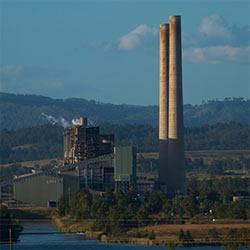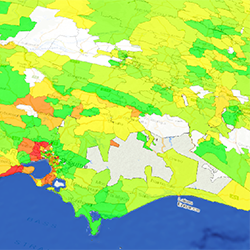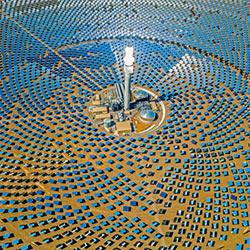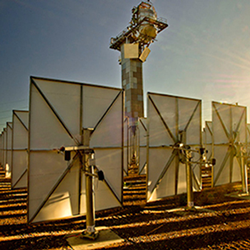
We recognise there are two sides to the energy equation – supply and demand.
On the supply side, our work supports emerging clean and smart technologies, renewables and electricity networks that are de-centralised, low carbon, fit-for-purpose, resilient and adaptive.
On the demand side, we believe that lifting energy productivity and improving energy efficiency will make Australia more internationally competitive and strengthen our economy.
Featured projects

|

|

|

|

|

|

|

|
Other projects
Intelligent Grid
The Intelligent Grid Research Program is an Australian collaboration between the CSIRO and five universities investigating technologies and practices to make our electricity networks smart, greener and more efficient.
The electricity “grid” is a collective name for all wires, transformers and infrastructure that transport electricity from power plants to users. In all networks, some energy is lost as it is travels, making distribution inefficient.
An “intelligent” electricity grid has a minimal amount of waste and a highly efficient use of power. It is an electricity network that uses distributed energy resources and advanced communication and control technologies to deliver electricity more cost-effectively, with lower greenhouse intensity and in response to consumer needs.
Read more about the Intelligent Grid Research Program here.
Ergon Energy's demand reduction potential review
Facing rapidly rising peak demand and an associated major network augmentation capital expenditure program, Ergon Energy, Queensland’s integrated rural electricity distribution network and retail business, sought the assistance of the Institute for Sustainable Futures and CSIRO to conduct a review of the cost-effective potential for demand reduction within its network. The Demand Reduction Potential Review (DRPR) project provided a unique opportunity to identify, quantify and communicate the benefits of expanding demand management programs. The results play a crucial role in formulating Ergon Energy’s medium term demand management plans, budget and proposals for consideration by the Australian Energy Regulator (AER) in the context of two five-year regulatory periods (2015-2020 and 2020-2025). Project partner CSIRO developed annual electricity demand projections for the period 2012 to 2025, along with contributions from different energy using equipment and behaviours. The Institute developed a methodology to quantify the technical, economic, and achievable potential of demand reduction and energy conservation across the residential, commercial and industrial sectors over time, within nine geographical regions in Ergon Energy’s territory. The project drew on and adapted existing resources, expertise and modelling tools developed by ISF and CSIRO under the Intelligent Grid Research Program. The project delivered not only recommendations as to the levels of Demand Reduction for the setting of regulatory targets, but also a model designed to enable the integration of demand management and energy conservation within existing network management processes, facilitate capacity building within Ergon Energy and support communication of the potential for cost-effective demand reduction to key stakeholders.
Network Scenario Modelling
A number of plausible future scenarios were developed in partnership with Oakley Greenwood for the Victorian energy market between 2013 and 2025, to feed into longer-term business strategies. ISF contributed to the scenario development by predicting the trends related to various key decentralised energy technologies including solar PV, electric vehicles, battery storage, distributed generation, demand management and energy efficiency based measures. Scenarios were developed based on in-depth consultation with key employees of Citpower and Powercor, and included detailed description of the likely characteristics of the businesses’ operating environments in 2025 under each scenario, e.g. customer profiles, services provided in the market, market players. They also included predicted the effects of regulatory form of control and other regulatory settings/reforms that could impact on the outcomes of the different scenarios. ISF then modelled projections of customer numbers, energy usage and demand (peak and average) of these technologies under each scenario.
DMIS Rule Change
The Australian Energy Market Commission (AEMC) received a request for a rule change that relates closely to the expected findings from the Facilitating Local Network Charges and Local Electricity Trading project. The request was to introduce a payment from distribution networks to embedded generators, which reflects any benefits embedded generators may provide to the network, and acknowledge a partial charge for partial network use. The five virtual trials of local network charges and local electricity trading being undertaken by ISF will provide case study evidence for a local network charge methodology, and economic modelling of the effect on consumers. The project is the first quantitative testing of the mechanism in the Australian market, and results are therefore highly relevant to the rule change determination. The Institute provided a submission to AEMC requesting an adjustment to the consultation time frame to ensure the AEMC and other stakeholders can take account of the results from the ISF project. [view/download ISF's submission]
Breaking the Solar Gridlock
This project investigated whether network support payments for installing concentrating solar thermal power (CSP) at grid constrained locations in the Australian National Electricity Market (NEM) could bridge the cost gap for CSP, while achieving societal savings in the costs of addressing network constraints. The project quantifies the potential economic benefits from installing CSP at grid constrained locations, and maps where CSP could provide cost-effective network support services. The project found that CSP can offer a commercially viable alternative to traditional network augmentation solutions in addressing electricity grid constraints. The study identified $0.8 billion of potentially avoidable network investment, and 533 MW of cost effective CSP which could be installed at grid constrained locations in the next 10 years. This would reduce greenhouse emissions by 1.9 million tonnes per year. The final report and maps are available from: http://breakingthesolargridlock.net/
Macquarie University Energy Strategy
ISF was commissioned, in partnership with CDM Smith, to develop the Macquarie University Campus Energy Supply and Distribution Strategy, to guide energy infrastructure decisions over 20 years. This involved the assessment of centralised and decentralised energy options under a range of future Campus Energy Development Scenarios, to investigate the comparative environmental and financial outcomes for the University. This also involved the application of a comprehensive Urban Systems Model (managed by CDM Smith) to Australian conditions for the first time. The technical assessment was undertaken concurrently with an assessment of the legal and governance structures within the University to ensure this research can be applied as the basis for future energy development at Macquarie.
Energy and Water Linkages
ISF undertook analysis of the water-energy linkages between the UTS campus and the Frasers development site in Broadway. Potential environmental and financial benefits for both UTS and Frasers Broadway were identified through deliberate coordinated planning of energy and water infrastructure. It was found that the primary environmental and financial benefits flowing from synergies in energy and water infrastructure between the sites stem from the ability to achieve economies of scale and increase the utilisation of capital intensive equipment, by connecting facilities to larger demand with potentially more diverse daily and seasonal load profiles. The major infrastructure options identified include a sewer mining system at Frasers, proposed rainwater supplying a non-potable water network at UTS and gas-fired trigeneration systems supplying electrical, heating and cooling services to both sites.

